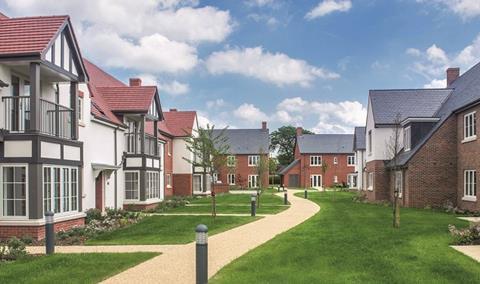The wider specialist housing market for older people is currently in a state of transition and structural change, and it’s probably no exaggeration to say that in five year’s time, the market might look unrecognisable to the sector we have today.

It is important to note the differences between the two principle products in the market: as the name implies, retirement housing is mainly about providing a housing option, supplemented by low level support services provided by visiting staff members. Since the 1970s, this was the main housing model for older people, provided for social or affordable rent (in the form of sheltered housing provided by housing associations) or to a lesser degree for private leasehold built by small number of specialist retirement housebuilders. With generally lower land takes, retirement housing developments have often been built on brownfield or even infill sites, with schemes ranging in size from 25 to approx. 60 units. The main economic incentive has been on creating value through development profit, with property management often outsourced and delivered on a modest ‘cost plus’ basis.
The other principle type of housing for older people is more difficult to describe (not least because there are too many different terms in use), but I will sum this up under the umbrella term of ‘retirement communities’ providing care and support. In this market segment (also often referred to as retirement villages or extra care housing), 24h support is provided on site, with access to meals, additional (and optional) care services and a wider range of communal facilities (which can include gyms, libraries, cinema room and craft rooms, or even swimming pools).
The vast majority of investor interest and growth has been focused on this second category – over the past 18 months, AXA, Legal & General Capital and Goldman Sachs have all announced plans to invest in the retirement community/village segment of the market. Apart from the large investors, we are also seeing a large number of smaller operators developing offers in the full service retirement community space. What they have in common is a strong operational focus – for example, we are seeing a number of traditional care home operators looking to diversify and ‘reach down’ into the retirement community market.
There are two main reasons why the housing-with-care market is flourishing – on the one hand, research has shown that customers value the lifestyle offer connected to enhanced facilities very highly. In addition, safety and security are in very high demand: while most residents will not have a need for care when moving to a retirement community, most older people want to be safe in the knowledge that they will be able to be supported should their needs change.

Underlying this - and this is key to understanding the current market dynamics - is a shift to business models that enable the creation and operation of long-term, sustainable business models. Providing high levels of service, coupled with optional care services, is a complex business which cannot easily be reconciled with the traditional ‘cost plus marginal surplus’ approach to managing retirement housing in the long term.
Whether it is via rental models or using deferred fees to align the interest of residents with the operators (while simultaneously creating sustainable income streams), all indications are that we are seeing a sustained shift towards long-term business models – including from retirement housebuilders who previously focused on development profit only, but who are now keen to build sustainability into their long term customer proposition.
In many ways, the UK is following a trajectory that other countries have already been on – it is absolutely vital to understand that the flourishing retirement village sectors in Australia and New Zealand are more or less exclusively built on long term business models.
Overall, in my view this also means that we are going to see an accelerated move towards more specific regulation – ARCO’s Vision 2030 strategy includes a focus on pushing for higher levels of customer protection, robust standards and additional legislation, including new models of tenure. And in all likelihood, once this is in place (a question of when, not if), this will mark the point where the fledgling retirement housing sector will finally grow up and become an asset class in its own right.






























No comments yet